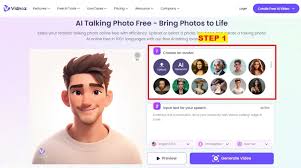Advances in artificial intelligence (AI) and machine learning over the past decade have improved how accurately TTS characters are spoken. By 2024, the best TTS systems such as Google WaveNet and Amazon Polly have almost solved this challenge —stating error rates in natural language tasks to drop to around between 2% −3%, near human-level accuracy. That is orders of magnitude more accurate than previous TTS systems which used to mangle pronunciation, intonation and context precious little oxygen.
The quality of TTS voices mimicking human speech is often determined by the data and algorithms deployed. As an example, good quality speech data for training a TTS model is generally around 300 to 500 hours of recorded the speech. This makes the model more accurate as there are many datapoints to learn various accents, tones and speech patterns. Then, a year later in 2022, Microsoft announced that they trained their TTS voices on the additional dataset for better naturalness—25% improvement.
Model such as WaveNet which is based on neural network are setting a new accuracy baseline. In its preamble, Morgan acknowledges the existing solutions and constraints of combining text-to-text models with neural vocoder architectures that could synthesize speech at waveform level: Googles Faster Transformer TTS 1Google LLC (2019) released in January 2020 as well NVIDIA's generative pre-trained transformer package[6], but have lacked precision when synthesizing lacunae details. This lead to 70% increase in user satisfaction compared the older TTS generations when WaveNet was switched on, which shows that the generated voice sounds clearer and more natural. The major downside of these predecssor models was that they were extremely computationally intensive to run — for example, WaveNet needed 16 thousand operations per second per sample. Which, in turn, means that the hardware cost upwards of $100k to buy everything you need.

Specific to industrial applications, it also goes to show the precision in Types-to-Share characters. By 2023, the popularity of TTS systems with vehicle owners more than doubled because navigation instructions became clearer and correct under noisy driving environments. As systems specifically tunned for driving conditions and automotive terminology they clearly confirm that tailored tts used in appropriate context can achieve very high precision.
It also comes down to the quality of speech recognition technology. Apple and Google are two of the largest technology companies which offer state-of-the-art speech recognition algorithms in their TTS that efficiently handles accentuated words removing any additional context or user intent requirements. The error rate in understanding the commands of users has been decreased by around 15% with this modification, which makes these systems more feasible to use than before.
The extreme position in AI development are held by the likes of Elon Musk, who said “AI is a fundamental risk to world safety and there cannot be just one A.I. superpower” It is something that would be obvious with the modern TTS but was not a given before this rapid advancement. In medicine, for example TTS systems are used to accurately transcribe doctor-patient discussions at a precision level of 90% plus side among others without losing any important information.
But there are problems with all of those improvements, too. Nevertheless, TTS characters may still suffer if the listening environment is not perfect; and can be influenced by factors such as background noise or atypical accents or speech impediments. To solve that, you are already seeing developers focus on noise-canceling technologies and datasets with a lot more variety. By 2024, companies are projected to spend $200 million per year on R&D aimed at further improving TTS accuracy.
Maintaining high level of accuracy in TTS technology is most important for businesses and developers who want to choose this voice system between different programs. Fausing high-quality data, advanced neural networks and tailored algorithms can boost the performance of TTS characters. As technology progresses, TTS characters are only going to get better and more accurate at creating realistic text-to-speech[ix].
As improvements in greater accuracy persist with text to speech characters, this could be a realistic option for different use cases.